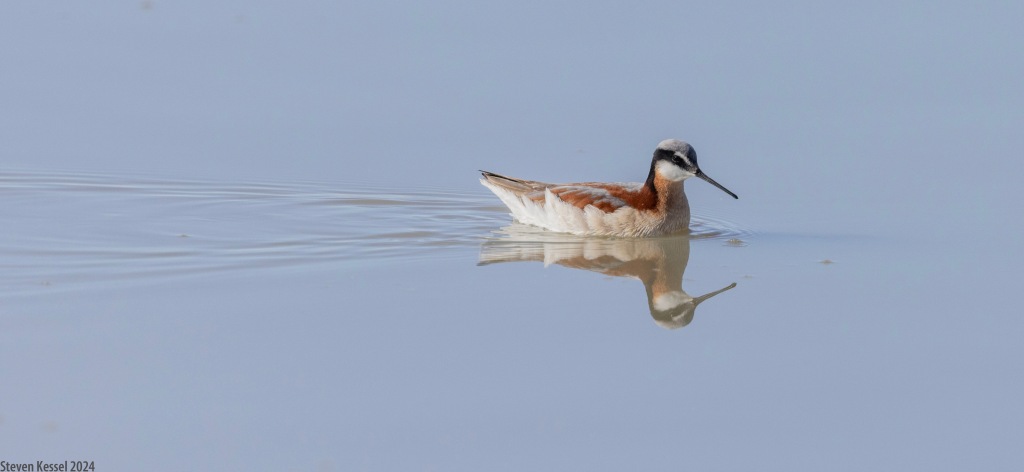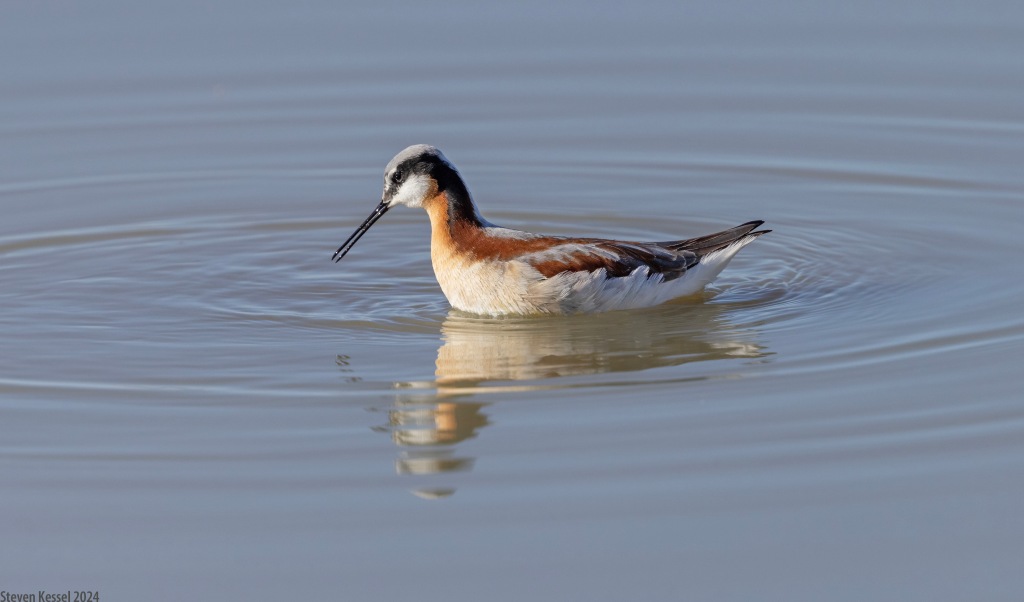You may enlarge any image in this blog by clicking on it. Click again for a detailed view.
There are many bird species that feature males and females with different plumage. Generally, it’s the males who sport the brighter colors. That’s not true with Wilson’s Phalarope, a small, sandpiper-like shore bird. With this species, during breeding season, it is the females who wear the most eye-catching plumage.

I recently encountered a flock of about two dozen phalaropes during a visit to southeastern Arizona. This species spends neither its summers nor its winters in Arizona but passes through our area during its migrations. In summer, Wilson’s Phalarope breeds in the United States’ northwest and in southwestern Canada. In winter, it resides in South America.
Wilson’s Phalaropes have a remarkable lifestyle. They forage by spinning in circles in shallow water. Their spinning creates whirlpools that sweep invertebrates to the surface that the Phalaropes pick off. It is an extremely efficient way of hunting food for these birds. The birds in the next two images were spinning when I photographed them. The little whirlpools that they created can be seen as rings in the water.

The Phalaropes’ breeding behavior is as unique as their foraging style. Phalaropes practice polyandry — that is to say, females have multiple mates. The female mates with a male, lays a clutch of eggs (nearly always four), then moves on to look for another male and to lay more eggs. The male lingers with the eggs, incubates them, and raises the offspring.

The Phalaropes that I photographed didn’t linger very long. I returned to the same location two days after I made today’s images and the Phalaropes were gone, headed no doubt to their northwestern breeding grounds.
Images made with a Canon R5, Canon EF 400mm f4 DO II lens+Canon EF 1.4x telextender, supported by monopod, M setting (auto ISO). First image, ISO 800, second image, ISO 1250, third image, ISO 1600. All images, f5.6 @ 1/4000.
